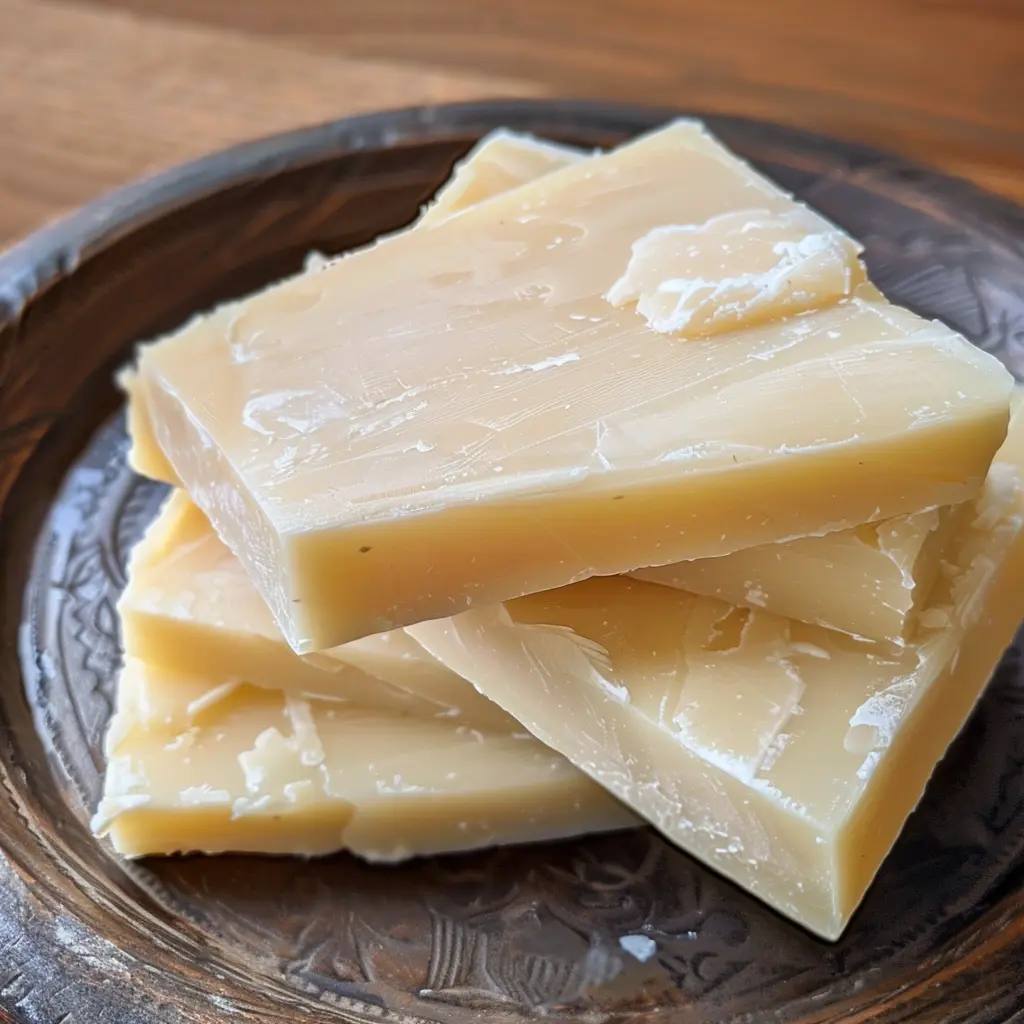Introduction, Importance, and Overview
Beef tallow, once a cornerstone of traditional culinary practices, is experiencing a resurgence among both professional chefs and home cooks who are eager to tap into its rich flavors and myriad benefits. This guide delves into the historic and current importance of beef tallow, offering a comprehensive look at its uses and advantages. From its deep-rooted history to practical advice on how to render and utilize this flavorful fat in modern cooking, this guide provides all you need to incorporate beef tallow into your kitchen repertoire.
By exploring its diverse applications—from frying and baking to enhancing the tastes of simple dishes—this guide aims to inspire you to explore beef tallow not just as a cooking ingredient, but as a bridge to a richer culinary heritage. As we uncover the secrets to producing high-quality tallow and the best practices for its use, you’ll gain the knowledge to make more informed choices about the fats in your diet. Whether you’re looking to elevate your cooking techniques or embrace a more sustainable approach to kitchen practices, beef tallow offers a path to achieving both. This guide is your essential resource for rediscovering this traditional fat and making it a valuable part of your culinary arsenal.
Understanding Beef Tallow
Definition and Historical Relevance
Beef tallow is rendered beef fat, primarily sourced from the suet around the loins and kidneys. Historically, tallow was a critical element in the kitchens of our ancestors, used not only in cooking but also in candle making and as a lubricant in machinery. Its use in culinary applications dates back centuries, serving as a reliable source of energy and flavor.
The Nutritional Profile of Beef Tallow
Benefits for Health

Despite modern misconceptions about animal fats, beef tallow is rich in nutrients. It contains vitamins A, D, E, and K, and is a good source of conjugated linoleic acid (CLA) which has been shown to improve heart health and reduce body fat. Its high smoke point makes it ideal for frying and sautéing, preventing the formation of harmful free radicals.
Culinary Uses of Beef Tallow
Cooking Techniques and Recipe Ideas
Tallow can transform simple ingredients into delectable dishes. It’s excellent for frying potatoes, making flaky pastries, and can be used to sear meats to perfection. Beyond frying, it’s great in confit preparations, where meat is gently cooked in fat for a melt-in-your-mouth texture.
Sourcing Quality Beef Fat
Tips on Selecting the Right Fat
For the best quality tallow, source fat from grass-fed cows. This fat is typically richer in nutrients and has a better flavor profile. Visit local butchers or farmers’ markets where you can inquire about the origins of the fat and how the animals were raised.
Essential Tools and Equipment
List of Necessary Items for Tallow Making
To make tallow at home, you’ll need a few key tools:
- A large stockpot or slow cooker
- A fine-mesh strainer
- Cheesecloth or a coffee filter
- Containers for storage (preferably glass)
The Step-by-Step Process
Detailed Guide on How to Make Beef Tallow
To make beef tallow, start by chopping beef fat into small pieces. Render the fat by slowly heating it in a pot until it melts. Strain the liquid fat through a cheesecloth to remove impurities. Allow it to cool and solidify. Store the tallow in a container for future use.
Preparing the Beef Fat
Start by cleaning the beef fat, removing any meat or blood. Chop the fat into small pieces to speed up the rendering process.
Rendering the Fat
Place the chopped fat in a slow cooker or a heavy-bottomed pot and heat it gently. Allow the fat to melt slowly, which can take several hours. Stir occasionally to prevent burning.
Filtering and Storing Beef Tallow
Once the fat has melted, strain it through a fine-mesh strainer lined with cheesecloth to remove impurities. Pour the clean tallow into containers and allow it to cool. Store it in the refrigerator or freezer for long-term use.
With these techniques, you’ll be able to create your own high-quality beef tallow, bringing a touch of traditional cooking into your modern kitchen.
Recipes and Applications
Cooking with Beef Tallow
Beef tallow enhances both the flavor and nutritional value of many dishes. It’s particularly great for high-heat cooking methods such as frying and roasting. For example, using tallow to fry potatoes adds a depth of flavor that vegetable oils simply can’t match. It’s also excellent for sautéing vegetables, lending a subtle richness that enhances natural flavors.
Beef Tallow in Baking
In baking recipes, you can replace butter or shortening with beef tallow. It’s especially effective in savory pastries, like pie crusts for meat pies, where it contributes a flaky texture and a rich taste. Tallow is also beneficial in making brioche-type breads, giving them a tender crumb and a golden crust.
Non-Culinary Uses of Beef Tallow
Beyond the kitchen, beef tallow has numerous applications. It can be used to make candles, providing a natural and clean-burning alternative to paraffin. Tallow is also excellent for making soaps, offering a hard, long-lasting bar with creamy lather. Additionally, it can be used as a natural moisturizer, helping to hydrate and protect the skin.
Benefits of Using Beef Tallow
Health Benefits of Beef Tallow
Beef tallow is a source of good fats, such as monounsaturated and saturated fats, which are essential for a balanced diet. It’s rich in fat-soluble vitamins and CLA, which has been linked to reduced cancer risk, lower cholesterol levels, and improved immune function. Its natural composition means it’s free from the artificial trans fats found in many hydrogenated oils, making it a healthier choice for cooking.
Environmental Impact
Using beef tallow as a cooking fat also supports sustainability. By utilizing tallow, a byproduct of beef production, you contribute to reducing waste in the meat industry. Additionally, sourcing tallow from grass-fed animals can encourage more sustainable farming practices, such as rotational grazing that improves soil health and carbon sequestration.
Common Mistakes and Troubleshooting
When making beef tallow at home, common mistakes can affect the quality of the final product. One frequent error is rushing the rendering process. High heat can burn the fat, resulting in a bitter, unpleasant flavor. Another mistake is not stirring the fat occasionally, which can cause uneven rendering and potential burning. Also, inadequate straining can leave impurities in the tallow, affecting its texture and storage life. To avoid these errors, maintain a low and slow heat, stir occasionally, and ensure thorough straining through fine cheesecloth.
Identifying Quality Issues

Recognizing signs of improperly rendered tallow is key to ensuring its quality. If the tallow has a dark color or a smoky, burnt smell, it likely indicates that the fat was cooked at too high a temperature. Tallow should be white or creamy in color with a mild, clean aroma. Any gritty texture or residual particles can also signal insufficient straining. If the tallow goes rancid quickly, this may be due to contamination with water or meat particles, emphasizing the need for careful handling and storage.
Tips for Perfect Rendering
For optimal results in rendering beef tallow, follow these expert tips:
- Start with dry, clean fat: Ensure that the beef fat is free from moisture and trimmed of meat residues to prevent spoilage and ensure a pure product.
- Cut fat evenly: Smaller, uniform pieces of fat render more evenly and melt more efficiently.
- Use a low, gentle heat: Slow rendering on low heat prevents burning and helps yield a cleaner, purer tallow.
- Stir occasionally: This helps distribute the heat evenly and prevents the fat from sticking and burning.
- Strain thoroughly: Use a fine mesh strainer and cheesecloth to filter out all solid particles, ensuring the clarity and purity of your tallow.
- Cool slowly: Let the tallow cool gradually before transferring it to storage containers to prevent moisture buildup, which can lead to spoilage.
FAQs About Beef Tallow
How Long Does Beef Tallow Last?
Beef tallow can last for a considerable amount of time when stored properly. At room temperature, it remains good for up to a month, but for longer shelf life, refrigeration is recommended. In the refrigerator, tallow can last for up to a year. To extend its freshness, ensure it’s stored in an airtight container to protect it from light and moisture, which can accelerate spoilage.
Can You Freeze Beef Tallow?
Freezing beef tallow is an excellent way to preserve its quality over extended periods. Tallow can be frozen for several years without any significant loss of quality. To freeze tallow, first allow it to cool completely after rendering and straining. Pour it into an airtight container or a heavy-duty freezer bag. Mark the container with the date and store it in the freezer. When ready to use, thaw it in the refrigerator overnight.
Is Beef Tallow Healthier Than Butter?
Beef tallow and butter both have their places in a balanced diet, each offering distinct nutritional benefits. Tallow is a good source of vitamins D, E, and K, and has a higher smoke point than butter, making it more suitable for high-temperature cooking without forming harmful free radicals. It’s also richer in stearic acid, which has a neutral effect on blood cholesterol. Butter, on the other hand, is higher in vitamin A and provides a beneficial ratio of omega-3 to omega-6 fatty acids. The choice between tallow and butter may depend on dietary restrictions, cooking needs, and flavor preferences.
How to Use Beef Tallow in a Keto Diet?
Beef tallow is highly compatible with a ketogenic diet, which is based on high-fat, moderate protein, and low carbohydrate intake. Here are some keto-friendly ways to incorporate beef tallow into your meals:
- Frying and Sautéing: Use beef tallow to fry or sauté vegetables and meats. Its high smoke point makes it ideal for cooking at high temperatures without oxidizing.
- Making Keto Snacks: Tallow can be used to make keto-friendly snacks like tallow-fried pork rinds or beef tallow chips.
- Baking: Substitute butter or other fats with beef tallow in keto bread recipes or pastries to add moisture and richness without the carbohydrates.
- Bullets for Coffee or Tea: Stir a teaspoon of tallow into your morning coffee or tea for an energy boost that aligns with keto principles.
Incorporating beef tallow into your keto diet can help maintain your macronutrient ratios while providing essential fats that support ketosis.
Conclusion
Beef tallow is a versatile and nutritious fat that has stood the test of time, proving its value and utility in both traditional and modern kitchens. Its exceptional cooking properties, nutritional benefits, and multifaceted applications make it a valuable ingredient for anyone looking to enrich their culinary experiences. Whether used for frying, baking, or enhancing the flavors of various dishes, beef tallow offers a healthy, stable, and flavorful fat option. Additionally, its role in sustainable practices by utilizing byproducts of beef production emphasizes its environmental benefits. By incorporating beef tallow into your diet, you’re not only opting for a superior cooking medium but also participating in a storied tradition that champions both taste and health. Embracing beef tallow can elevate your cooking while contributing to a more sustainable and health-conscious lifestyle.

1 thought on “How to Make Beef Tallow”